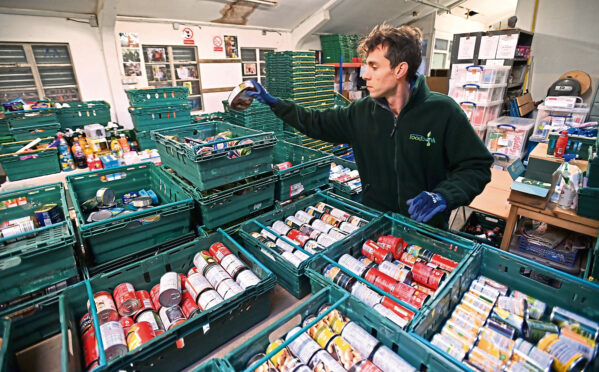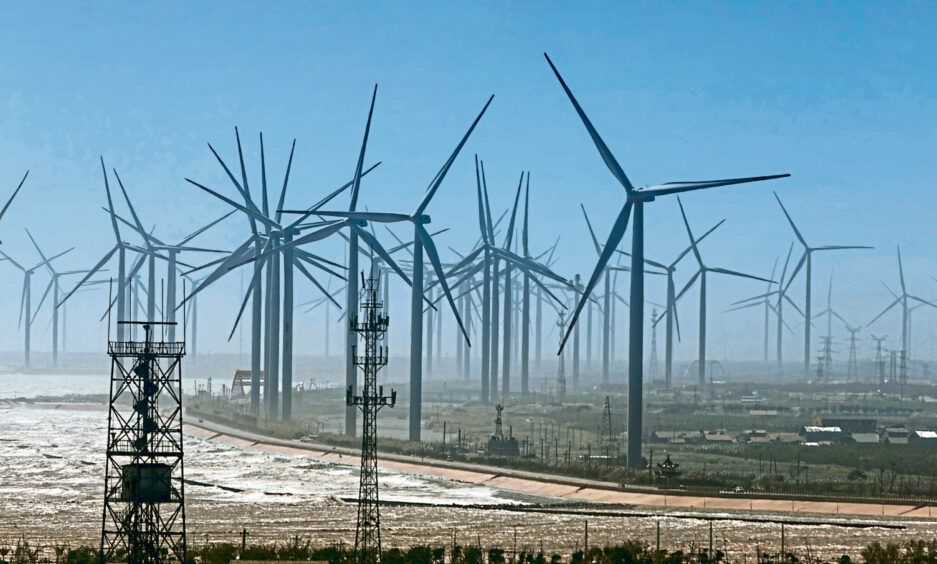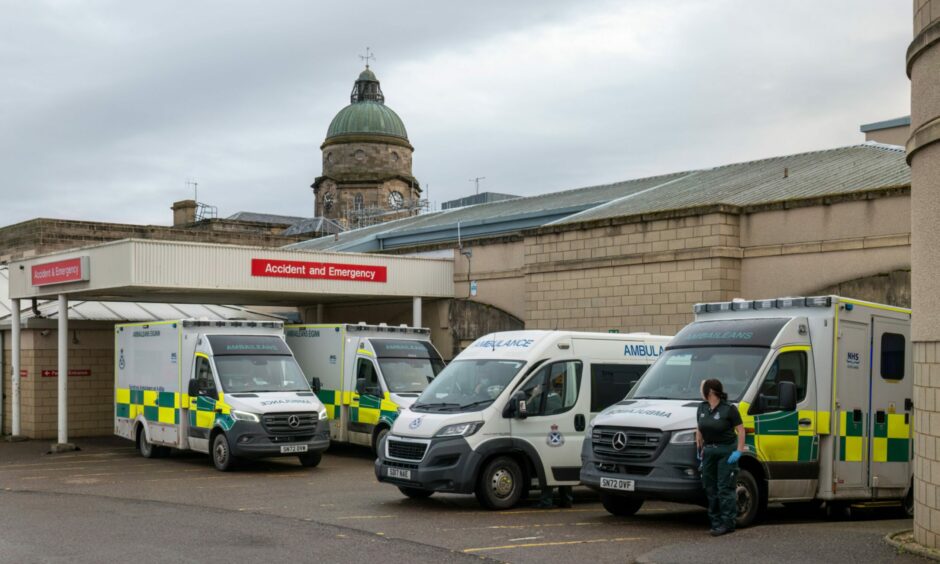Sir, – I refer to your articles on foodbanks, (January 3 and 4). The work of such organisations as Cfine and Inverness Foodstuff should, on the one hand, be celebrated but on the other hand why do we have so many foodbanks in the fifth richest country in the world?
According to the House of Commons library there are more than 1,400 Trussell Trust foodbanks in the UK. In addition, there are at least 1,1792 independent foodbanks.
At the same time, the UK now has a record number of billionaires with 177, according to the new Sunday Times Rich List.
That’s up six from 2021 – and the combined wealth of the UK’s billionaires stands at £653 billion, up more than £55 billion (9.4%) on the total wealth of the billionaires in last year’s Rich List.
Overall, the richest 250 people in the UK this year are worth £710.723 billion, compared to £658.089 billion in 2021, an 8% rise on last year.
A report by the Equality Trust has shown that the wealth of the UK’s billionaires has skyrocketed by 1,000% between 1990 and 2022, ballooning by around £600 billion. On top of this there is massive tax evasion in our country.
According to an Institute for Fiscal Studies report, income inequality in the UK has grown more than in most OECD countries. But it is in levels of wealth where there is the greatest divide. According to the Wealth Commission, rising wealth has been driven by the price of property and the value of private pensions. At the same time rents have been rising 6.2% on average in Scotland last year and increased energy costs affect poorer households disproportionately.
All this means that there is an increasing divide in wealth between those that own property and those that don’t, and between older and younger people. Younger people who do most of the work have at the same time been hit by stagnant wage levels hence the level of strikes.
What we have been experiencing in the UK is “trickle-up” economics with the rich getting richer, particularly those at the top, and those at the bottom getting poorer.
Jonathan Russell, Springbank Place, Aberdeen.
Germany’s wind turbine output
Sir, – Dick Winchester (Letters) is correct when saying that Germany doesn’t need an oil and gas industry for wind turbine manufacturing.
It’s a well-known fact that Germany doesn’t have any natural oil and gas reserves to speak of.
In order to keep its manufacturing industries going and houses heated, it relies on oil and gas imports, notably from Russia.
Other carbon-based resources are imported coal and natural resources of lignite. In 2021 Germany accounted for 46% of lignite produced in the EU. In the wake of the war in Ukraine and in order to compensate for oil and gas shortages, the German government has extended the operation of nuclear power plants and reopened five lignite power stations. That will ensure that Germany can keep making wind turbines for export.
Regina Erich, Willow Row, Stonehaven.
SNP’s financial failures laid bare
Sir, – Like anyone viewing the winter walls of green seawater shutting off all sight of Peterhead’s breakwaters, we shook our heads at the floating tubular contraption which was to generate electricity by its undulating movement in the sea around the north-east coast. No surprise then, when it wound up a broken tangled heap on the shore.
It has shared its dismal investment failure with a lot of other SNP government quangos and investments totalling £173 million since 2002, with Scottish Enterprise leading the losers with £143 million after 973 waived or abandoned claims.
It managed to write off £23 million between 2014-15 while Highlands and Islands lost £30 million from 180 cases.
As I understand it, pension funds employ professional investment bankers to safeguard their money, after agreeing a percentage benchmark return from the money in their care. Failure to meet the benchmark by the professional investment bankers can mean they get fired.
Holyrood’s finance dramas are turning into an NHS-style crisis among others, and it’s about time for the opposition parties to get a grip of what is going on with our money, with a particular eye on the whereabouts of the £20 million “rainy day” fund which was set aside in the budget.
Sam Coull, Lendrum Terrace, Boddam.
Neglecting wildlife – and democracy
Sir, – Just when you think your own council and government can’t get any lower in your estimation, along comes an application to the Scottish Government from Orkney Islands Council to build six wind turbines 150m high, access roads, a pier and required electrical infrastructure on a small uninhabited island called Faray in Orkney.
This would not be so bad, but the island is a designated Special Area of Conservation as it hosts the second largest breeding grey seal colony in the UK.
The application was rejected by the government’s own planners and advisers, only to be approved by a government minister, the third time a minister has overruled their own government planners and advisers and allowed permission for three wind farms to be built in unsuitable areas in Orkney last year.
What hypocrites the SNP/Greens MSPs appear to be. They demand democracy from Westminster but don’t care a jot for their own people, wildlife and the unique environment of Scotland.
It’s obvious anything can be sacrificed as long as the lights stay on in Edinburgh. Now if the island road had been a dual carriageway that certainly would have stirred the Greens into action.
As for our so-called wildlife environmentalists who run campaigns on wild justice or strive to save seals in the Arctic, what about Scotland’s wildlife, or is that not high-profile enough for them to be seen to act?
As for our Scottish Government wanting independence, William Wallace and Robert the Bruce would turn in their graves if they knew that the freedom and democracy they fought so hard for is now being eroded bit by bit by this SNP/Green government.
Jim Leitch, Evie, Orkney.
Economy of truth on climate change
Sir, – Mike Hennan takes issue with The P&J because on occasions it publishes letters from those who disagree that human CO2 emissions are the principal drivers of climate change.
Sadly, he betrays a mind that is closed to reasoned debate by describing such contributors as “self-interested climate denier cranks” who, he contends, adhere to the belief that if lies are repeated often enough then people will believe them to be the truth. May I suggest that he looks in a mirror where, if he were candid, he would be able to see the litany of half-truths and pseudo-science that have been used by the likes of the Intergovernmental Panel on Climate Change (IPCC) and the false prophecies of Al Gore to fan the flames of fear.
There are too many examples to list here but perhaps the greatest catalogue of falsehoods stemmed from Mr Gore’s book and film of 2006 entitled An Inconvenient Truth.
Its centrepiece was what became known as the Hockey Stick Graph which depicted a sharp upward temperature trend in the late 20th Century while managing to completely erase any reference to the Medieval Warm Period (AD 800-AD 1300) thus creating an entirely false depiction of the temperature record.
The IPCC eagerly used it to bolster its own apocalyptic predictions but subsequently withdrew it when after six years it was proved to be false.
Mr Gore also maintained that we only had until 2016 to “prevent the planet from turning into a frying pan” and that “the North Pole Ice Cap is falling off a cliff and will be completely gone seven years from now”. His book was found by Britain’s High Court to contain nine serious and misleading scientific errors and 26 further inaccuracies.
The judge ruled that these errors had arisen “in the context of alarmism and exaggeration in order to support Mr Gore’s thesis on global warming” and that the science used was “to make a political statement to support a political argument”.
That sounds like a serious economy of the truth to me, Mr Hennan.
Neil J Bryce, Kelso.
In praise of Sir Ian Wood’s good work
Sir, – Everybody is entitled to their opinion but the overwhelming volume of hostility in The P&J web comments directed at the reflections of Sir Ian Wood is an illumination of the peculiar north-east characteristic of doing down any local who has achieved financial success.
To quote the man in the street: “Him and his money, who does he think he is giving his opinion?”
The council has already put him back in his box, daring to parade his wealth, by refusing his offer to transform Union Terrace Gardens, instead relying on other sources and the city purse to bring that little bit of stardust to the ancient landmark.
I have never seen the man, or have any connection with the energy industry, I’ve only read of how he founded the business in 1982 when splitting away from the family company and was pivotal in building it into the present-day consulting giant Wood, listed on the London Stock Exchange, and giving employment to many thousands throughout the world.
Probably this is how he qualified for his knighthood, many have felt sword on shoulder for much less.
In the meantime, I and countless attendees at ARI applaud the family foundation for building the Lady Helen Parking Centre which takes the worry of finding a parking space from many a fraught visit.
What Scotland needs is more people of his ilk, people with drive and vision, and not subject to derision just because they are wealthy.
Ivan W Reid, Kirkburn, Laurencekirk.
Anti-Tory NHS rant just doesn’t add up
Sir, – Herbert Petrie (Evening Express, January 5) wins the first coconut of 2023 with his latest anti-Tory rant.
Barely two weeks ago, he wrote that the Holyrood first minister had personally resolved the NHS Scotland pay issue with no help from Westminister (wrong).
Now the Tories have spoiled his Hogmanay by not paying a wage increase to the NHS – presumably this is for England and Wales as the Scottish NHS is devolved.
In Scotland, we have paid additional income tax for years but that has not improved NHS Scotland so surely his Scottish Hogmanay, rather than the English New Year’s Eve, was spoiled by the SNP not doing a deal.
His constant lack of reference to facts is part of the reason we cannot have grown up political debate in this country.
The polarisation of everything SNP good and everything Tory bad does nothing to progress issues.
Yes, the NHS issue has to be resolved but comparing the financial cost of the increase to 650 MPs (2.7% from April) against the financial cost of an increase to 1.2 million NHS employees (which will need to be considerably above 2.7%) will require a great deal more than Mr Petrie’s mathematical skills to balance.
Walter Service, Danestone.
Mo off to fast start
Sir, – May I say it didn’t take long into the New Year for your columnist Moreen Simpson to blame her hated Tories for the current state of the NHS.
No mention of her beloved SNP who are totally responsible for the NHS since 2007.
No forensic investigations into their performance over the last 16 years. Just a childish name-calling exercise.
James Noel, Leggart Terrace, Aberdeen.



Conversation